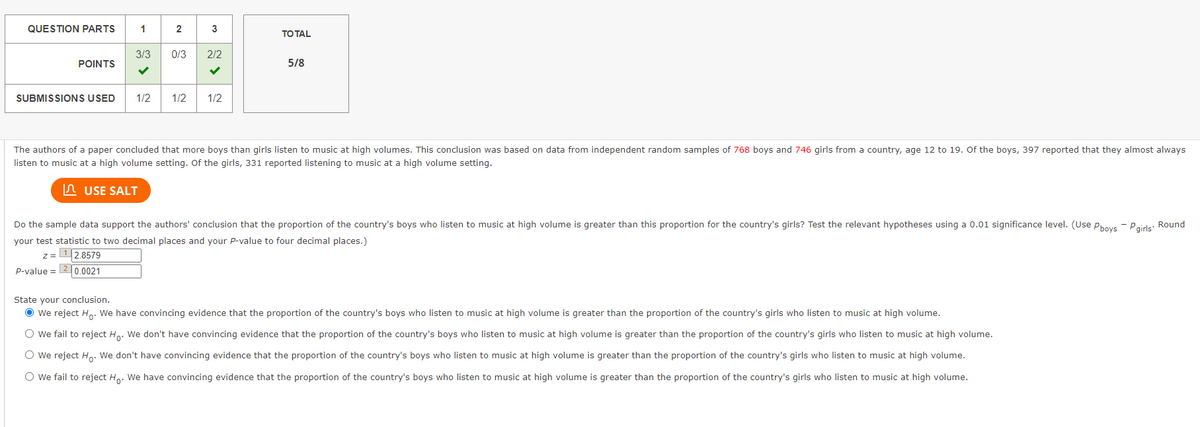The authors of a paper concluded that more boys than girls listen to music at high volumes. This conclusion was based on data from independent random samples of 768 boys and 746 girls from a country, age 12 to 19. Oof the boys, 397 reported that they almost always listen to music at a high volume setting. Of the girls, 331 reported listening to music at a high volume setting. A USE SALT Do the sample data support the authors' conclusion that the proportion of the country's boys who listen to music at high volume is greater than this proportion for the country's girls? Test the relevant hypotheses using a 0.01 significance level. (Use Poovs -Pairls: Round your test statistic to two decimal places and your P-value to four decimal places.) z=2.8579 P-value = 20.0021 State your conclusion. • we reject Ha- We have convincing evidence that the proportion of the country's boys who listen to music at high volume is greater than the proportion of the country's girls who listen to music at high volume. O we fail to reject Ho. We don't have convincing evidence that the proportion of the country's boys who listen music at high volume is greater than the proportion of the country's girls who listen to music at high volume. O we reject Ho- We don't have convincing evidence that the proportion of the country's boys who listen to music at high volume is greater than the proportion of the country's girls who listen to music at high volume. O we fail to reject Ha. We have convincing evidence that the proportion of the country's boys who listen to music at high volume is greater than the proportion of the country's girls who listen to music at high volume.
Unitary Method
The word “unitary” comes from the word “unit”, which means a single and complete entity. In this method, we find the value of a unit product from the given number of products, and then we solve for the other number of products.
Speed, Time, and Distance
Imagine you and 3 of your friends are planning to go to the playground at 6 in the evening. Your house is one mile away from the playground and one of your friends named Jim must start at 5 pm to reach the playground by walk. The other two friends are 3 miles away.
Profit and Loss
The amount earned or lost on the sale of one or more items is referred to as the profit or loss on that item.
Units and Measurements
Measurements and comparisons are the foundation of science and engineering. We, therefore, need rules that tell us how things are measured and compared. For these measurements and comparisons, we perform certain experiments, and we will need the experiments to set up the devices.

Step by step
Solved in 4 steps


